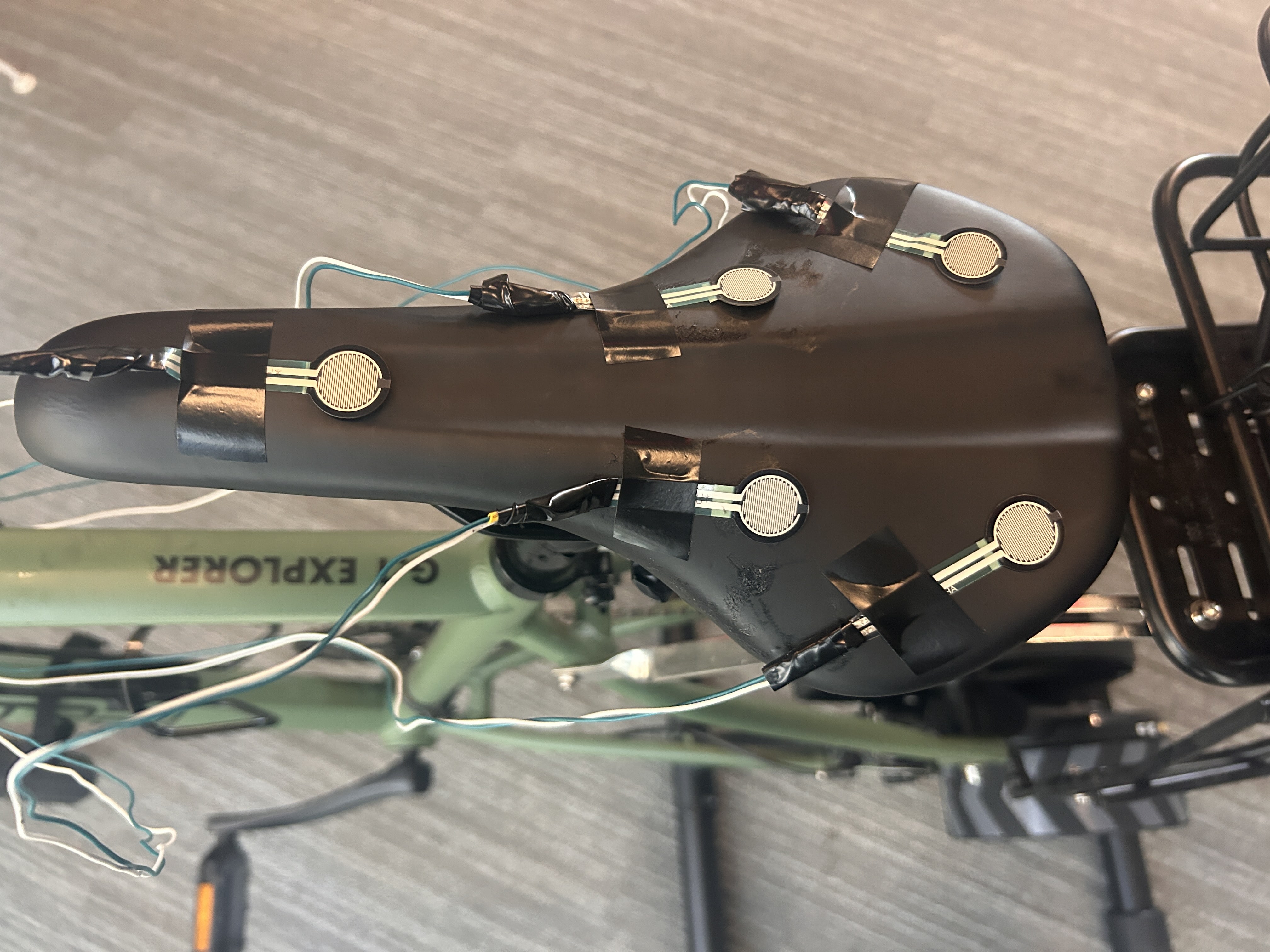Personal Weekly Update | Zoe | 4/19
Accomplishments
This week I moved the full pressure sensing system onto protoboards to make it more durable and easier to mount on the bike. I separated the system into two boards, one for the ESP32 and one for the two analog multiplexers, and soldered tuned resistors for each force sensor to improve sensitivity. I also measured and cut each sensor wire to the correct length so everything would fit neatly on the frame without strain or slack.
After that, I focused on improving the calibration logic. Instead of just storing a set of sensor values and matching them exactly, I implemented a masking system that saves which sensors were active during each pose. During the ride, the system now compares the live input pattern to the saved masks and runs a basic confidence check to detect incorrect pose matches. This helps improve ride feedback and makes the system more tolerant of sensor shifts and small posture changes.
We tested this setup with Rita riding the bike, including while pedaling, and it worked well. I also helped coordinate timing with Carolyn to get the app syncing properly with the new sensor system. We got the app running on my phone too, which made it easier to test BLE behavior and ride visualization without always needing her device.
Outside of that, I worked with Rita on three updated housing prints to improve fit and usability. I also began outlining some of our presentation slides, and started designing simple, readable tables and visuals to explain our system clearly during the demo.
Progress Status
The sensor system is now fully operational on protoboards, and calibration logic is updated and functional. BLE communication is working as expected, and we’ve tested the system during live bike use. Still making some refinements to calibration flow and app feedback, but overall the hardware and sensing side is in a good place.
Next Steps
– Finalize mounting with updated housings
– Tune calibration matching thresholds and confidence scoring
– Begin working on basic knee tracking using the imaging setup
– Help complete BLE timing and UI integration in the app
– Finish presentation visuals and prepare for final ride testing
New Knowledge and Tools
This week I learned how to design and build a two-board system that stays compact and functional while handling 16 analog signals with multiplexers. I figured out how to space components, route wires cleanly, and tune resistors to improve signal resolution. Most of this was learned through trial and error, checking readings in real time with a multimeter and debugging connections until things were stable.
I also developed a more flexible way to detect riding poses by using sensor activation patterns and confidence scoring. I didn’t follow a formal guide for this, just tested ideas based on general knowledge of pattern recognition, read through a few GitHub discussions, and logged live outputs to see what made sense.
On the software side, I got more comfortable with BLE behavior in Swift, working with Carolyn to understand how the app receives and formats data. Having the app running on my phone helped speed up testing and made it easier to debug on my end.
Sensor Placement on Bike:


Final Housing Design:


